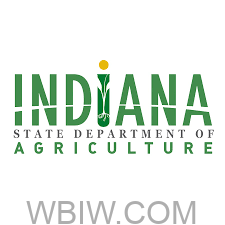
INDIANA — The Indiana State Department of Agriculture, The Nature Conservancy, and the United States Department of Agriculture’s Risk Management Agency have joined forces to implement the Cover Crop Premium Discount Program once again.
This program mirrors efforts in Iowa and Illinois and will reward farmers who plant cover crops by providing a reduced premium on their crop insurance. The discount program was designed to promote planting additional acres of cover crops that are not covered by other state or federal incentives. This is the second year for this program in Indiana’s Upper West Fork White River region counties.
“Cover crops are beneficial for the soil and soil structure in many ways, the nutrients and ground cover they provide cannot be matched, but like many other things, they have a cost to them,” said Lt. Gov. Suzanne Crouch. “I am excited that this program will once again give farmers an opportunity to increase their cover cropped acreage, which will improve water quality and enhance soil structure in our state.”
Over the last year, this program had great success, with 27 farmers participating that translates to more than 7,000 acres of cover crops on Indiana farmland in the watershed.
This program will provide farmers with a unique opportunity to receive financial incentives for implementing cover crops in their operations. Farmers who plant cover crops on owned or rented acres will receive a five-dollar-per-acre crop insurance premium. Farmers who planted cover crops in the fall of 2021 are eligible to apply. Currently, this program is only available to farmers in the Upper West Fork White River.
Qualifying counties in the Upper West Fork White River include Henry, Delaware, Madison, Hamilton, Tipton, and Randolph.
Cover cropping has many benefits including increased organic matter, improved soil biology as well as better water infiltration and water-holding capacity. This practice also prevents nutrients and sediment from running off the farm, keeping them out of nearby water bodies and streams. Hoosier farmers planted 1.5 million acres of living covers in 2020 and, apart from corn and soybeans, are planted on more acres than any other commodity crop in Indiana.
“Nothing is more precious to farmers than their soil, and healthy soils are crucial for producing bountiful crops, maintaining clean water supplies, mitigating climate change, and maintaining farm viability,” said Larry Clemens, state director for The Nature Conservancy in Indiana. “The Nature Conservancy is proud to partner with ISDA, USDA, and the member organizations of Indiana Agriculture Nutrient Alliance to support farmers to increase the use of cover crops in Indiana.”
Bruce Kettler, director of the Indiana State Department of Agriculture encourages farmers to learn more about this program if they farm in the Upper White Region.
“This program is a tremendous resource for farmers in the Upper West Fork of the White River and I encourage farmers who partook last year and new farmers to utilize this opportunity,” Kettler said. “I am very proud of Hoosier farmers for keeping soil conservation top of mind and planting record cover crop numbers each year. Thanks to programs like this we can continue to increase our cover cropped acres year after year.”
Seeding of cover crops must follow best agronomic practices in terms of appropriate seeding rates, seed mixes, and seeding dates to ensure the objectives of the cover crop are being met. To ensure the practice provides the best results termination must be completed in the spring.
Funding support for this program was supplied by the Nina Mason Pulliam Charitable Trust. In 2017, the trust initiated collaborative grants to several Indiana nonprofit organizations, forming Partners for the White River. Collectively, these organizations are conserving and improving the White River and providing opportunities for Hoosiers to once again feel connected to their waterways. Partners are performing water quality research and monitoring, helping reduce pollution, improving wildlife habitat, and increasing access to – and awareness of – the waterway. Currently, this trust is focused on the White River, which is why only farmers in the Upper White Region counties are eligible.
Applications are due January 15, 2022. Learn more and apply here or visit isda.in.gov.



